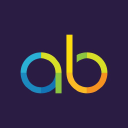How We Grew Our Personal Finance Blog To $2M/Year
Hello! Who are you and what business did you start?
My name is Jeff Proctor, and I am the co-founder of DollarSprout.com, a personal finance blog geared towards millennials who are interested in making and saving extra money.
Our revenue model is 100% focused on affiliate marketing. For those unfamiliar, this is when a publisher earns a commission on each sale or lead generated from their referral links.
For example, let’s say we have an article that teaches a reader how to get better about saving money. Within that article, we might mention a banking app that could help them achieve their savings goal faster. If a reader signs up for the app through our site, we earn a small commission (at no expense to the reader).
It took us over a year to start earning any meaningful revenue, but fast forward to today (4 years after starting), and DollarSprout is on pace for over $2M in revenue for 2019.

Download the report and join our email newsletter packed with business ideas and money-making opportunities, backed by real-life case studies.

Download the report and join our email newsletter packed with business ideas and money-making opportunities, backed by real-life case studies.

Download the report and join our email newsletter packed with business ideas and money-making opportunities, backed by real-life case studies.

Download the report and join our email newsletter packed with business ideas and money-making opportunities, backed by real-life case studies.

Download the report and join our email newsletter packed with business ideas and money-making opportunities, backed by real-life case studies.

Download the report and join our email newsletter packed with business ideas and money-making opportunities, backed by real-life case studies.

Download the report and join our email newsletter packed with business ideas and money-making opportunities, backed by real-life case studies.

Download the report and join our email newsletter packed with business ideas and money-making opportunities, backed by real-life case studies.



























